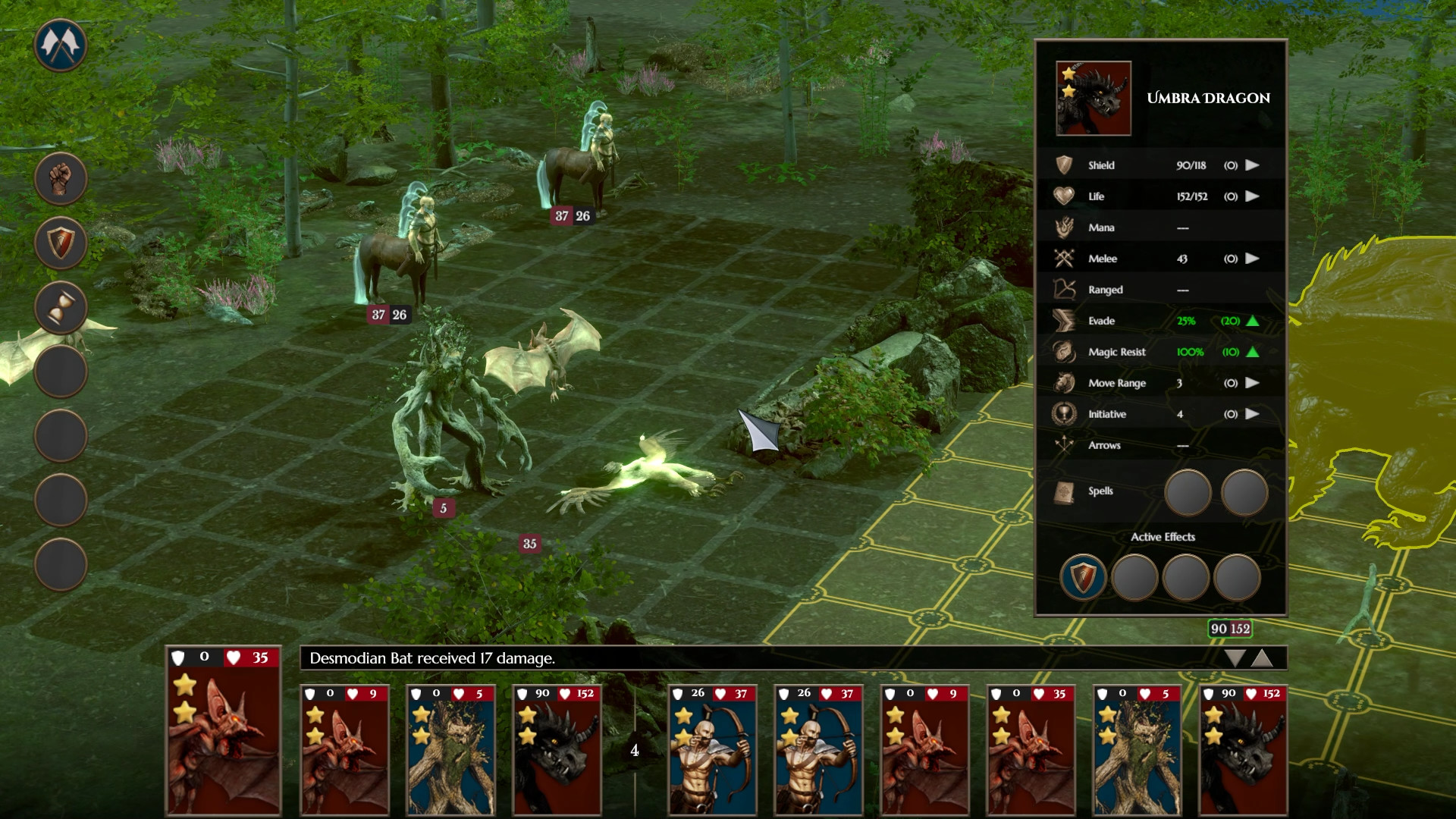After a depressing stillness that followed the release of Might & Magic: Heroes VII, it seems the turn-based strategy genre is in for a resurgence. With the launch of King’s Bounty 2, Disciples: Liberation and the upcoming Songs of Conquest and The Dragoness: Command of the Flame, the fans of the genre are in for a turn-based treat.
The center of today’s attention, The Dragoness: Command of the Flame is slated to release “soon”, but those interested can check out the demo of the game on Steam, which is exactly what we are going to do. The demo consists of the tutorial and the first mission and will take roughly about an hour to beat.
Where Disciples: Liberation and King’s Bounty 2 aimed to depart from the classic gameplay loop and explore new possibilities by introducing a variety of real-time and RPG elements, The Dragoness is heavily based on and is staying true to the Heroes of Might and Magic legacy.
That means turn-based travels, grid combat, city building, special abilities for creatures and heroes and much more. While there weren’t many opportunities to stretch wings in the demo, the features seem promising.
The game features seven various resources you’ll need to collect on your travels including but not limited to iron, wood, stone and more. Building up your city and hiring new creatures will eat up a generous amount of resources produced daily at the captured mines or gathered from random heaps scattered around the map.
Speaking of eating up, The Dragoness also features provisions for your army. At the end of every turn, your creatures will consume a stack of food. If you run out and the army is forced to march on empty stomachs, it will get a stacking debuff to defense and attack.
When you choose to end your turn, you get a choice of three smaller buffs for the next one, such as +2 extra movement points, 10% extra mana or health regen, a small number of resources, or even additional experience, etc.
Unlike the previously mentioned King’s Bounty 2 and Disciples: Liberation that pursued grittier, darker and more realistic aesthetics, The Dragoness chose more stylized and cartoonish visuals closer to those of Heroes of Might and Magic V or Dungeons 3. While the animations are a bit wooden at this point, I really appreciate the vibrant colors and overall aesthetic making the world of The Dragoness a charming magical place.

In the beginning, you can have up to six creatures in your army. The Dragoness features a nice variety of fantasy creatures: harpies, treants, centaurs, demons, dragons, etc.
If you have two of the same creatures, you can “combine” them to upgrade and increase their stats. For example, combining two Centaurs with 21 Health, 15 Shield and 9 Ranged Attack would merge them into a Centaur Veteran with 27 Health, 20 Shield and 12 Ranged Attack. At that point, it would take two Centaur Veterans to merge them into a Centaur King to further improve stats.
If you have played any of the turn-based strategies of the last two decades, the combat will be very familiar to you: a large grid, with two armies starting on the opposite sides of the field.
The creatures have a variety of stats such as mentioned above Health, Shield and Ranged/Melee Attack Power, further affected by your Commander’s level and chosen passives. The units have their turns in combat according to the initiative bar at the bottom of the screen.
Certain creatures have special abilities: for example, Ents can cast Slow on enemies while Harpies can increase the allies’ chance to evade attacks. These abilities usually have a few turns-long cooldowns and can be used a limited number of times during the battle.
Of course, you can also order your units to wait or to pass their turn and use it to your strategic advantage: pelt a slower melee unit with ranged attacks and magic before engaging, let an enemy creature come closer so that your own melee can have the first attack, and so forth.

One hour in, the story does not present itself much. You are the Commander, and you are invited to join and lead the armies of the Queen aka the Dragoness. Who is your character and why is she drawn into this conflict – what is even the conflict? – is yet unrevealed.
Either way, you are met by Natiq, a noble Battle Pangolin, who will serve as your advisor and the comedic relief through the tutorial – right until your character’s unfortunate demise at the claws and teeth of an Umbral Dragon. Apparently, a sworn enemy of your future liege.
However, death is not something that can stop the Commander. In fact, it will even play into your advantage: the Dragoness is able to revive her subject in the new capital city of Níwenborh, your main base of operations.
Going through the revival process allows you to choose class/specialization before starting a particular mission. You will be able to see the pros of the choices on the screen when you are deciding.
If you feel like you’ve chosen poorly and the strengths of your specialization don’t work well with the mission’s units and enemies, you can use the portal back to the Capital to swap your choice. Beware, this feature takes a special currency and thus is not available readily, and you will be sacrificing your progress to do so.






